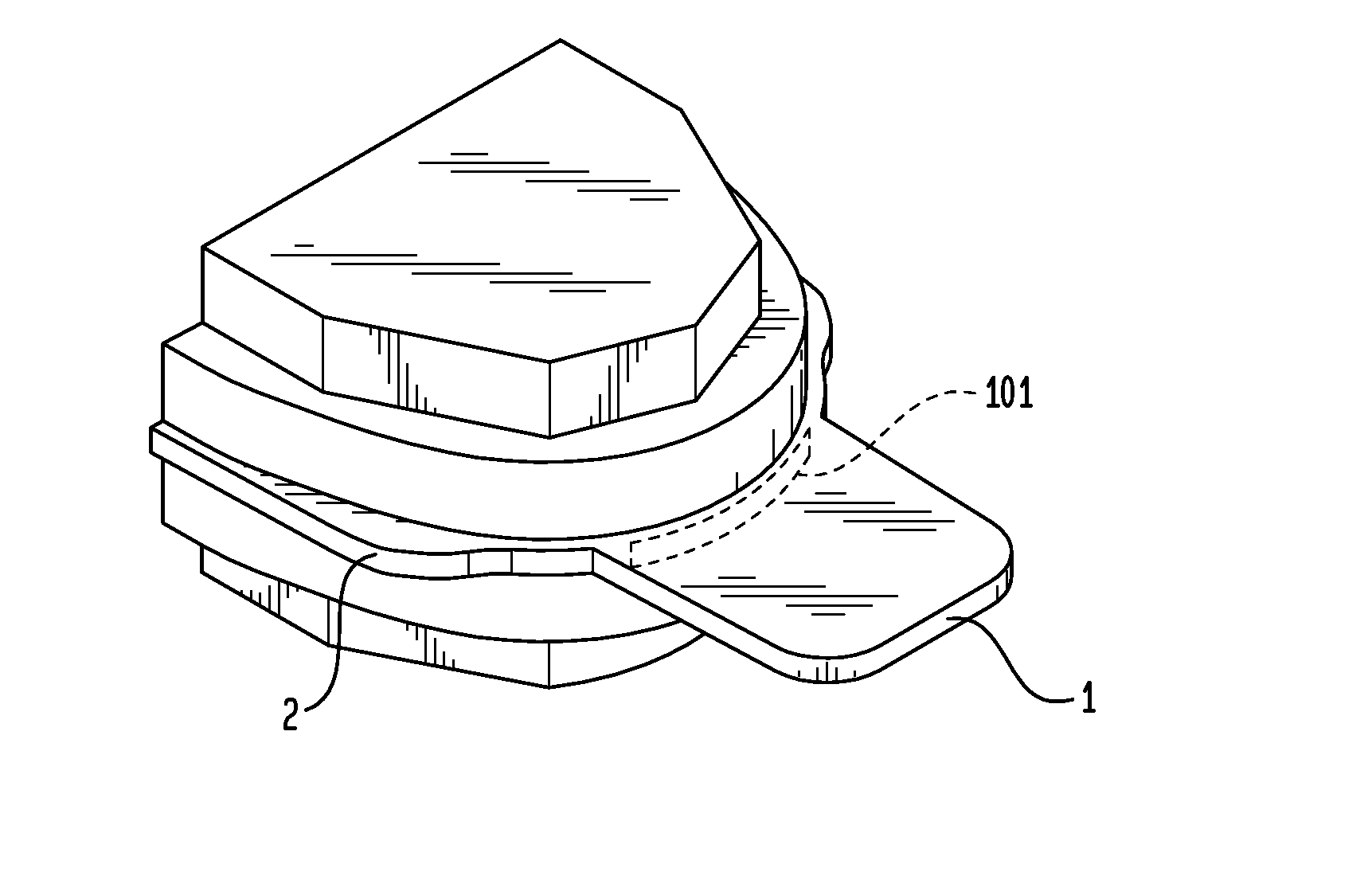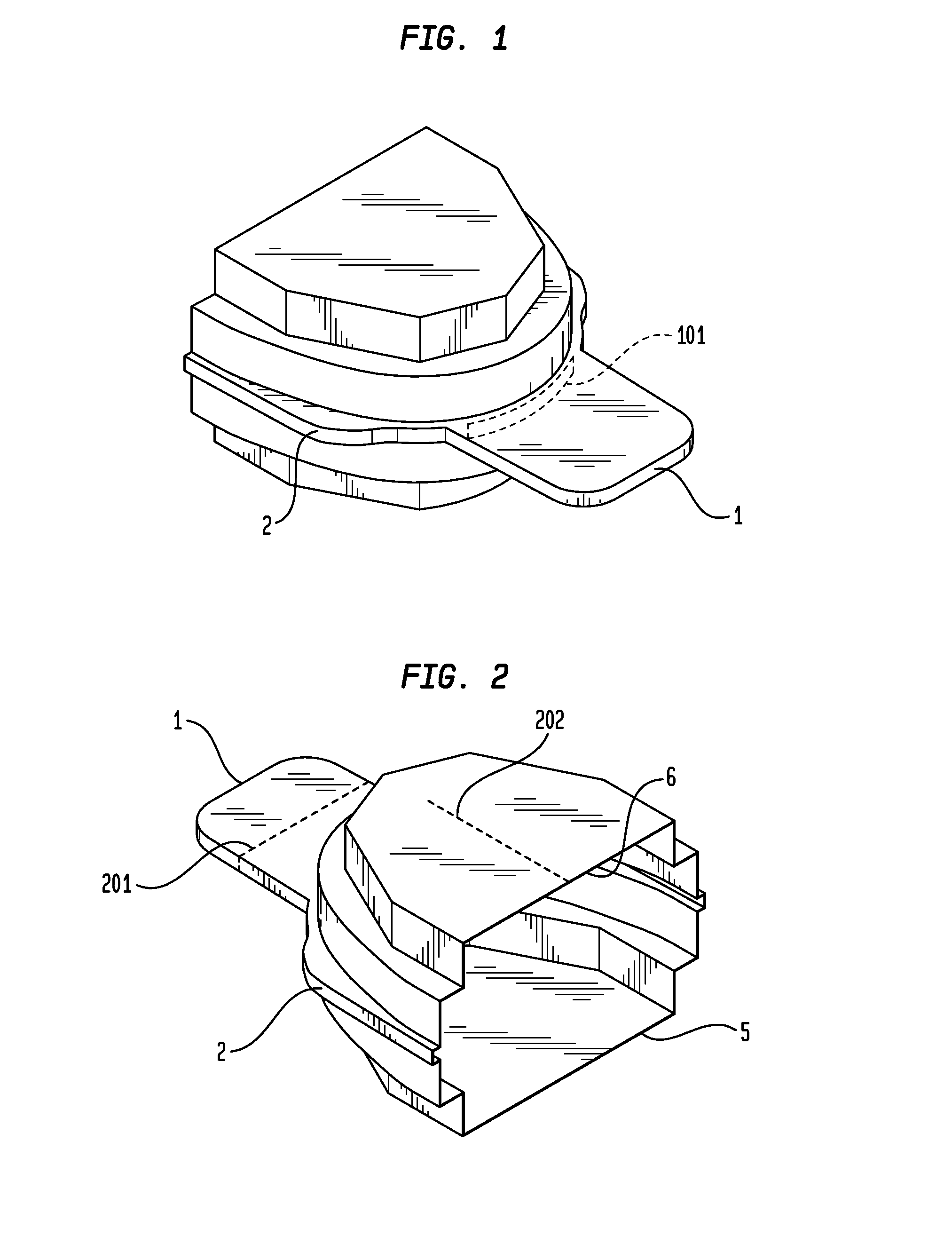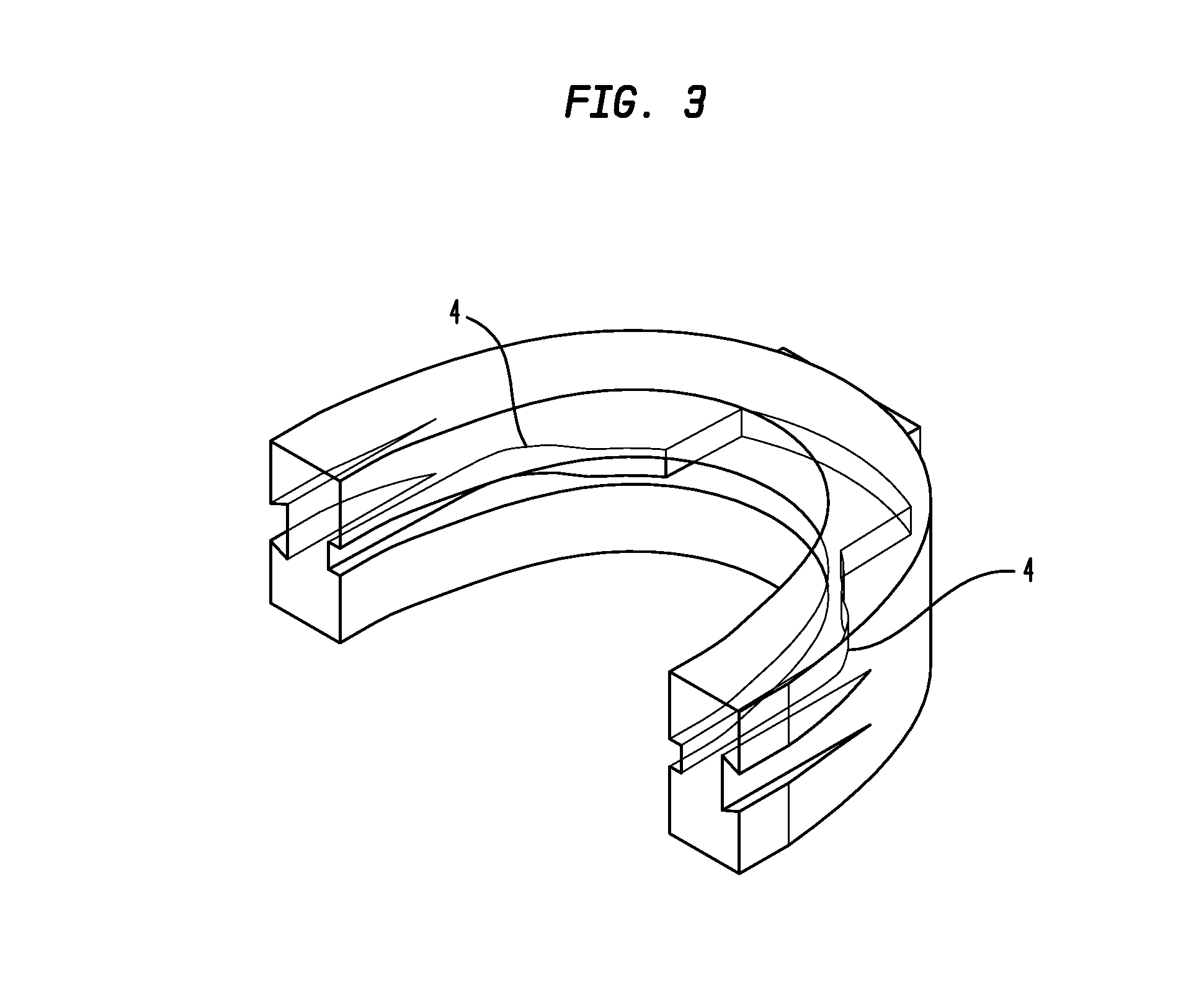Dental Impression Model System, Apparatus, and Method
a dental impression and model system technology, applied in the field of dental surgery, can solve the problems of consuming patient's time and extending the patient's presence in the chair, affecting the patient's natural bite, so as to reduce the chance of distortion and operator error, reduce the cost, and accelerate the process
- Summary
- Abstract
- Description
- Claims
- Application Information
AI Technical Summary
Benefits of technology
Problems solved by technology
Method used
Image
Examples
Embodiment Construction
[0064]A casting model housing as in FIG. 1 is used to receive at least a partial dental impression of a dental patient's maxillary and mandibular oral anatomy, and potentially incorporate an articulator to register the patient's bite—or how the maxillary and mandibular teeth come together. This exemplary casting housing is used to create a model of what dental professionals hope to replicate through the process of taking an impression of at least a portion of a patient's maxillary and mandibular anatomy as well as the bite registration, pouring up the impressions, forming the bases and articulating them so that they can use the replica for a variety of reasons such as but not limited to: planning the patient's treatment, creating dental appliances such as but not limited to removable partial dentures, custom trays, tooth whitening trays, mouth guards, night guards, etc.
[0065]One embodiment of this invention may require as little as one mix of dental modeling material to pour up the ...
PUM
 Login to View More
Login to View More Abstract
Description
Claims
Application Information
 Login to View More
Login to View More - R&D
- Intellectual Property
- Life Sciences
- Materials
- Tech Scout
- Unparalleled Data Quality
- Higher Quality Content
- 60% Fewer Hallucinations
Browse by: Latest US Patents, China's latest patents, Technical Efficacy Thesaurus, Application Domain, Technology Topic, Popular Technical Reports.
© 2025 PatSnap. All rights reserved.Legal|Privacy policy|Modern Slavery Act Transparency Statement|Sitemap|About US| Contact US: help@patsnap.com



